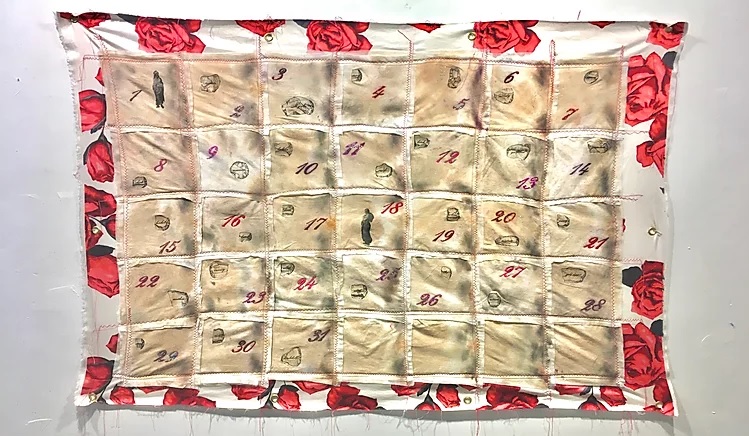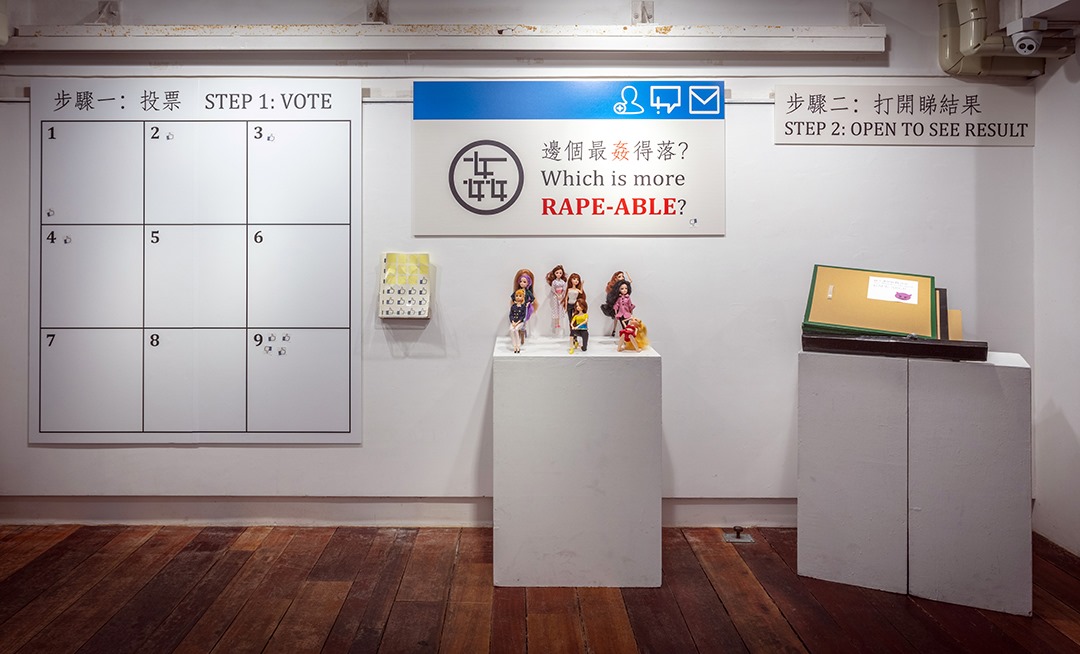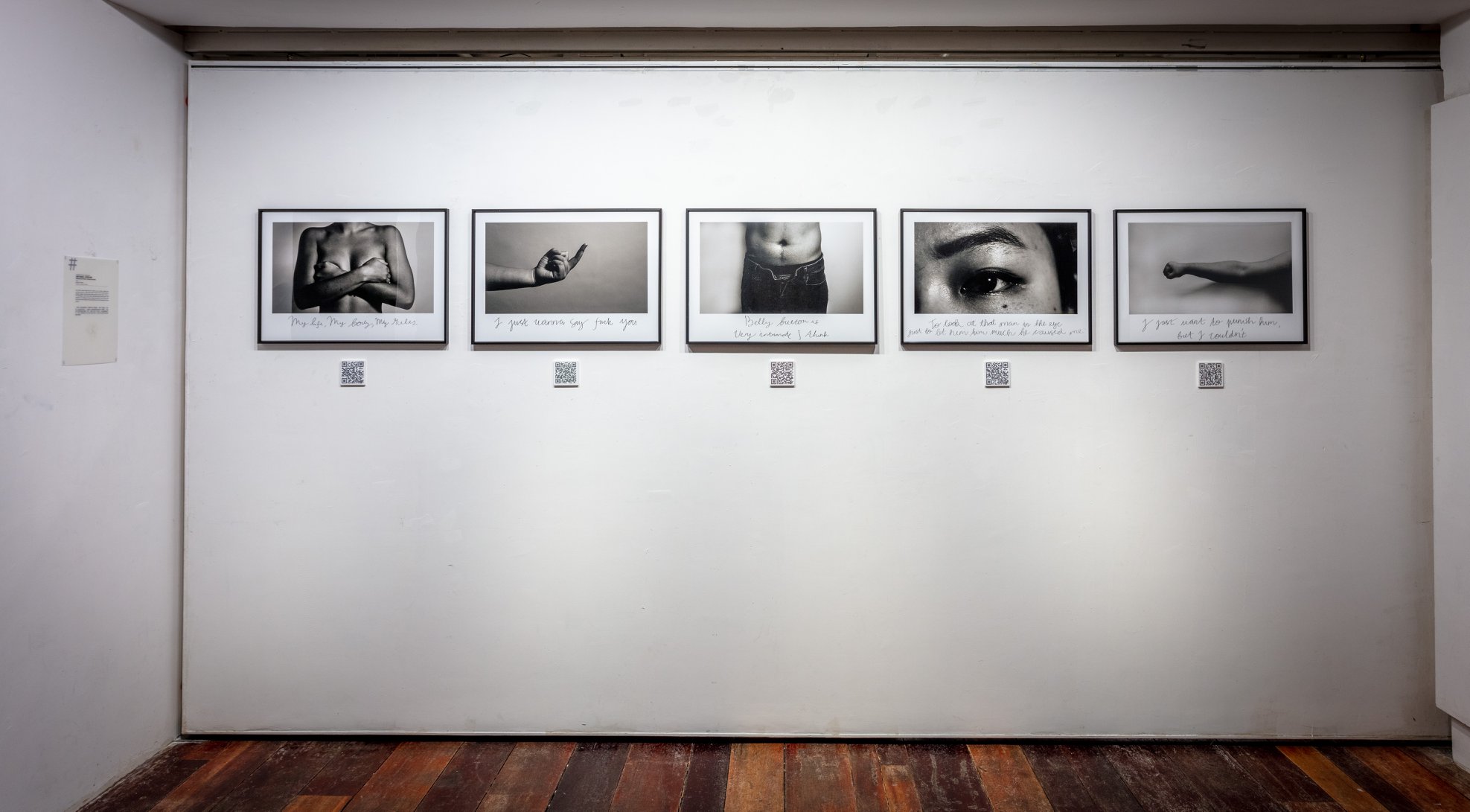藝評
後MeToo藝術 | Post #MeToo Art
姚悦 (Sahra AZADZOY)
at 12:00pm on 21st May 2020





圖片說明:
1. 黃嘉瀛,污糟邋遢,2020
2. 吳傲雪,完美受害人,2019
3.-5. 展覽現場
Captions:
1.Wong Ka Ying, Dirty and Filthy, 2020
2. Sonia Ng, Ideal Victim, 2019
3.-5. Installation views of the exhibition
(原文以英文發表,評論〈後MeToo藝術 〉展覽。)
Dirty, sharp and loud, JCACC, 11 – 18 March 2020
The Jockey Club Creative Arts Center (JCACC) in Shek Kip Mei shone again with its affinity for diversity by offering a stage for unapologetic, strong female voices sharing their stories of inequality and sexual violence. The "Post #MeToo Art" exhibition was presented by curator and artist Phoebe Man, who also participated in the exhibition.
"Post #MeToo Art" is an exhibition continuing the conversation the "#MeToo" movement famously began in 2017 when the hashtag took social media by storm, creating a domino effect stemming from the courage of a few women who bravely shared their stories of past sexual trauma. Three years after the hashtag, we now live in a post-#MeToo era. An era in which former Hollywood film producer Harvey Weinstein is now serving 23 years for rape, and there is now a new understanding of the language to give consent.
Regardless, the #MeToo conversation is still in its infancy and this exhibition reminds us that the issue does not begin or end with the campaign: it is not about a few individual cases, but about an issue omnipresent in every women''s life.
The twelve participating artists expressed urgency for an ongoing, mutual conversation by sharing their personal stories, in all their rawness. The interactivity of many of the artworks encouraged a sentiment of unison between artists and audience and created a safe space for connection and empathy.
A theme that weaves itself through the exhibition is of the unperfect woman: the provoking, dirty woman, a troublemaker. The unperfect woman is not mentioned in a disparaging manner, but as one exclaiming that she is a desirable reality. In Dirty and Filthy (污糟邋遢) radical feminist Wong Ka Ying challenges the notion of the perfect woman and exposes her own ‘dirty’ and ‘ugly’ self. Wong uses used make-up wipes, acrylic, pencil, watercolour, found objects and Polaroids in her artwork to resemble a calendar. This and the blood-red-coloured flowers gracing a backdrop seem to be a reference to menstruation, which is still often seen as unclean and a taboo topic to discuss. The make-up wipes are stained and filthy, showing the ambiguity of wearing make-up, a possible contradiction as cosmetics are traditionally considered to make women more beautiful, but once wiped the filth is exposed. Instead of hiding this ‘ugliness’, Wong provocatively and naturally reveals this dirt to the audience, gaining an upper hand, deflecting any criticism.
Similarly, artist and activist Sonia Ng explores societal ideals in her mixed media artwork An Ideal Victim. As a survivor of sexual violence by the police, Ng has held press conferences and public meetings about police brutality, making her a target of online defamation and character assassination. Even though the #MeToo movement allowed women to finally be heard, support is only given to what Sonia Ng calls "the ideal victim". A victim that fits in the mould strangers have formed of them and conforms to what they believe a victim to be. Ng’s artwork was composed of a word cloud of the hate speech against her to form the Chinese word for "Ideal Victim" (完美受害人). From a distance, the audience sees the victim as the ideal they want it to be, but once stepping closer to the artwork the messiness and truth is shown. Ng's artwork and experience testifying against sexual violence opens a necessary discussion about those who cannot raise their voices out of a fear of a backlash. In the post-#MeToo era, many opponents of the campaign compare it to a witch-hunt against men and are quick to judge or undermine women''s experiences of sexual assault. Women are still not taken seriously and are accused of lying and then ‘slut-shamed.’ Sonia Ng’s refusal for her voice to be drowned by accusations and hate sets a powerful sign to anyone who themselves have not yet come forward, or, struggle with the same lack of acceptance.
The "Post #MeToo Art" exhibition welcomed the audience not only as bystanders, but as a part of the empowering community created at JCACC in March. The artists provoked, engaged, and addressed the audience directly by making a connection that felt almost face-to-face. This density of emotion weighed heavily between artists and spectators, because each related to the other''s experiences and emotions.
Empathy is created out of mutual understanding. It is a powerful and lingering message when we realise that by sharing personal stories, we are also sharing the stories of many.
Links for further info:
Post #MeToo Art exhibition website
Post #MeToo Art exhibition facebook
